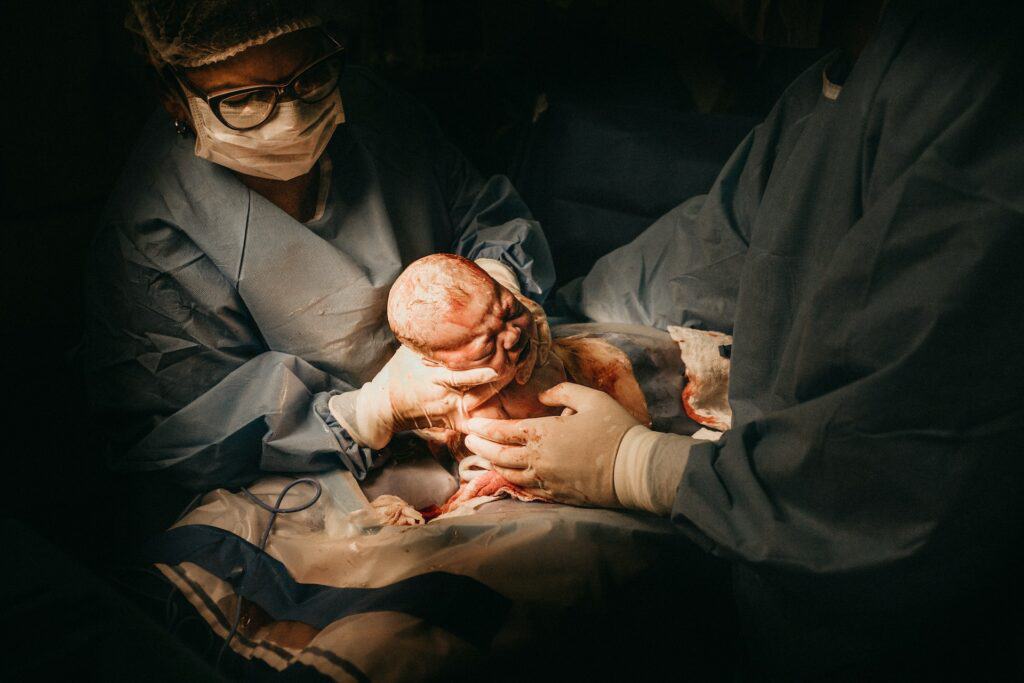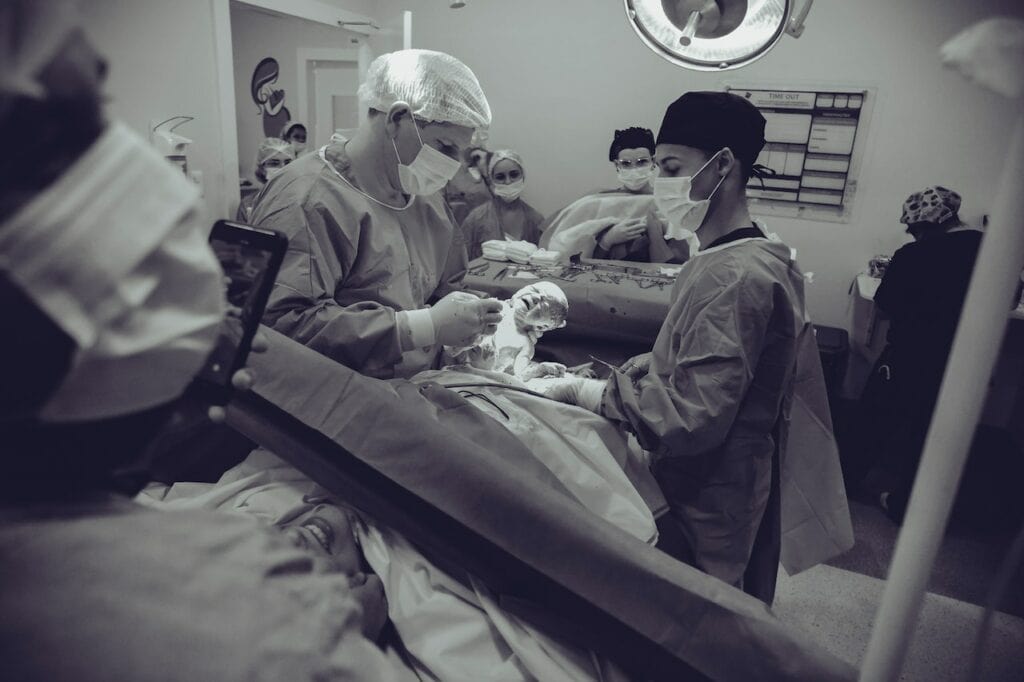C-section, also known as cesarean delivery, is a surgical procedure used to deliver a baby through incisions made in the mother’s abdomen and uterus. While it is a common procedure, it is still major surgery that requires proper care and attention to ensure a smooth recovery. One of the most important aspects of c-section recovery is how to keep C section incision dry from sweat.
Sweating is a natural bodily function that helps regulate body temperature. However, excessive sweating can lead to moisture buildup around the incision site, which can increase the risk of infection and slow down the healing process. This is why it is crucial to take steps to keep the c-section incision dry from sweat.
Key Takeaways
- Keeping the c-section incision dry is essential for proper healing and reducing the risk of infection.
- Clothing choices and managing sweat and moisture are important factors in keeping the incision dry.
- Proper postpartum care and following medical advice can help ensure a smooth c-section recovery.
Understanding C-Section Incision

A Cesarean section (C-section) is a surgical procedure used to deliver a baby. During a C-section, a doctor makes an incision in the lower abdomen and uterus to remove the baby. The incision is then closed with stitches or staples.
The incision made during a C-section is called a C-section incision. The incision can vary in length, depending on the size of the baby and the mother’s body. The incision is typically made horizontally, just above the pubic bone, but it can also be made vertically.
After the surgery, the incision will be covered with a bandage. The bandage is usually removed within a day or two, and the incision will be left to heal on its own. The incision will form a scar, which will fade over time but will never completely disappear.
It is important to keep the C-section incision clean and dry to prevent infection and promote healing. Sweat can be a problem, as it can cause the incision to become moist, which can lead to infection.
If a woman is scheduled for a C-section, she should avoid using any lotions, powders, or perfumes on her lower abdomen before the surgery. This will help to keep the area clean and dry.
If a woman has an emergency C-section, she may not have the opportunity to prepare the area beforehand. In this case, the doctor will clean the area before making the incision.
Overall, it is important to follow the doctor’s instructions for caring for the C-section incision. This includes keeping the area clean and dry and avoiding any activities that may cause the incision to become irritated or infected.
Importance of Keeping Incision Dry

After undergoing a C-section, it is crucial to keep the incision dry to prevent infection and promote healing. Moisture, such as sweat or water, can create a breeding ground for bacteria, including Staphylococcus aureus, which can lead to surgical site infections.
Keeping the incision dry can be challenging, especially during hot and humid weather or when engaging in physical activities that cause sweating. However, it is essential to take necessary measures to prevent moisture from accumulating in the incision area.
One way to keep the incision dry is to wear loose and breathable clothing. Tight clothing can trap sweat and moisture, leading to increased chances of infection. It is also advisable to change clothes frequently, especially after engaging in physical activities that cause sweating.
Another way to keep the incision dry is to use absorbent materials such as gauze or cotton pads. These materials can be placed over the incision area to absorb any moisture. However, it is essential to change them frequently to prevent the accumulation of bacteria.
In summary, keeping the C-section incision dry is crucial to prevent infection and promote healing. It is advisable to wear loose and breathable clothing, change clothes frequently, and use absorbent materials such as gauze or cotton pads to prevent moisture accumulation.
How to Clean the Incision

Keeping the c-section incision clean is crucial for preventing infections and promoting healing. Here are some tips on how to clean the incision properly:
-
Wash your hands with soap and water before touching the incision site.
-
Gently clean the incision site with soap and water. Use a mild soap and avoid scrubbing the area too hard.
-
Rinse the incision site thoroughly with clean water and pat it dry with a clean towel.
-
Avoid using any harsh chemicals or disinfectants on the incision site, as they can irritate the skin and delay healing.
-
If you have any concerns about cleaning the incision site, consult with your doctor or healthcare provider for guidance.
-
It is important to keep the incision site dry, so avoid taking long showers or baths, and pat the area dry with a clean towel after washing.
By following these simple steps, you can help keep your c-section incision clean and promote healing.
Dressing the Incision
Keeping the c-section incision dry is crucial for a speedy recovery. One way to do this is by dressing the wound properly. Here are some tips on how to dress the incision:
- Use a sterile pad or gauze to cover the incision. Make sure to change it regularly, as sweat can accumulate quickly and cause irritation.
- Cloth diapers or sanitary pads can also be used to absorb excess sweat. However, make sure to avoid scented products, as they can cause irritation.
- If a bandage is recommended by the doctor, make sure to change it regularly and keep it dry.
- When changing the dressing, wash your hands thoroughly with soap and water before and after. This helps prevent infection.
- If there is any drainage or bleeding from the incision, contact your doctor immediately.
By following these simple steps, you can ensure that the c-section incision stays dry and clean, promoting faster healing and reducing the risk of infection.
Clothing Choices for Keeping Incision Dry

Choosing the right clothing is important for keeping the C-section incision dry from sweat. Loose-fitting clothing made of breathable fabrics like cotton can help prevent sweat buildup and irritation. Tight clothing can rub against the incision, causing discomfort and increasing the risk of infection.
When it comes to underwear, high-waisted cotton underwear is a good choice for keeping the incision dry. This type of underwear covers the incision area and provides support without putting pressure on the incision. Avoid synthetic fabrics like nylon or polyester, as they can trap moisture and lead to sweat buildup.
It’s also important to choose clothing that fits well and doesn’t rub against the incision. Tight waistbands or seams can irritate the incision and cause discomfort. Opt for clothing that sits comfortably on the hips and doesn’t constrict movement.
In summary, choosing the right clothing is crucial for keeping the C-section incision dry and preventing sweat buildup. Loose-fitting, breathable clothing made of cotton is ideal, and high-waisted cotton underwear can provide additional support and coverage. Avoid tight clothing and synthetic fabrics that can trap moisture and irritate the incision.
Managing Sweat and Moisture
Keeping the c-section incision dry from sweat and moisture is important for proper healing. Excessive perspiration can increase the risk of infection and slow down the healing process. Here are some tips for managing sweat and moisture:
-
Air: Allow the incision to air out as much as possible. Wear loose-fitting clothes and avoid tight or synthetic fabrics that can trap moisture and heat.
-
Cool Setting: Use a cool setting on a blow dryer to dry the area after a shower or bath. Avoid using hot or warm air, which can increase sweating.
-
Fan: Use a fan to keep the area dry and cool. Direct the fan towards the incision area to help evaporate any sweat or moisture.
-
Baby Powder or Cornstarch: Apply a small amount of baby powder or cornstarch to the area to absorb any excess sweat or moisture. Be sure to avoid getting any powder inside the incision.
It’s important to note that excessive use of baby powder or cornstarch can cause skin irritation or infection. Use only a small amount and avoid applying too frequently.
By following these tips, you can help keep the c-section incision dry and promote proper healing.
Potential Challenges and Solutions
After a C-section, one of the biggest challenges is keeping the incision dry from sweat. This can be particularly difficult during the summer months or if you live in a hot and humid climate. Here are some potential challenges you may face and some solutions to help keep your incision dry.
Pain and Swelling
Pain and swelling are common after a C-section and can make it difficult to move around. This can lead to increased sweating around the incision site. To help alleviate pain and swelling, it is important to rest and take any prescribed pain medication. Applying ice packs to the incision site for 20 minutes at a time can also help reduce swelling.
Pressure and Bleeding
Pressure and bleeding around the incision site can also make it difficult to keep the area dry. To help reduce pressure, avoid tight clothing and consider wearing loose-fitting clothing made from breathable fabrics. If you experience bleeding, apply pressure to the area with a clean cloth or bandage. If bleeding persists, seek medical attention.
Inflammation and Itching
Inflammation and itching are common after a C-section and can lead to increased sweating around the incision site. To help reduce inflammation, consider taking an over-the-counter anti-inflammatory medication. Applying a cool compress to the area can also help reduce itching.
Redness and Infection
Redness and infection are serious complications that can occur after a C-section. To help prevent infection, keep the incision site clean and dry. Avoid using harsh soaps or lotions on the area and pat the area dry with a clean towel after showering. If you notice redness or signs of infection such as pus or fever, seek medical attention immediately.
Overweight and Obesity
Being overweight or obese can make it more difficult to keep the incision site dry from sweat. To help reduce sweating, consider losing weight through a healthy diet and exercise program. Avoid wearing tight clothing and consider wearing moisture-wicking fabrics to help keep the area dry.
Exercise and Walking
Exercise and walking can help promote healing after a C-section, but it can also lead to increased sweating around the incision site. To help reduce sweating, consider wearing moisture-wicking fabrics and avoid exercising during the hottest part of the day. It is also important to listen to your body and rest when needed.
Diabetes and Constipation
Diabetes and constipation can make it more difficult to keep the incision site dry from sweat. To help manage diabetes, follow a healthy diet and exercise program. If you experience constipation, consider taking a stool softener or increasing your fiber intake. Both conditions can increase sweating, so it is important to keep the area clean and dry.
Overweight Women
Overweight women may have a harder time keeping the incision site dry from sweat. To help reduce sweating, consider losing weight through a healthy diet and exercise program. Avoid wearing tight clothing and consider wearing moisture-wicking fabrics to help keep the area dry.
Overall, keeping the incision site dry from sweat can be a challenge after a C-section. By following these tips and seeking medical attention if needed, you can help promote healing and reduce the risk of complications.
Medication and Treatment Options

Keeping the C-section incision dry from sweat is crucial for a speedy recovery. In addition to proper hygiene practices, medication and treatment options can help prevent infection and promote healing.
Pain medication can help manage discomfort after surgery. Over-the-counter pain relievers like acetaminophen or ibuprofen can be effective, but prescription pain medication may be necessary for more severe pain. It is important to follow the recommended dosage and not exceed the prescribed amount.
Infection is a risk with any surgical procedure, including C-sections. Antibiotics may be prescribed to prevent or treat infection. It is important to take the full course of antibiotics as prescribed, even if symptoms improve.
Yeast infections can also occur after a C-section, especially if the incision is not kept dry. Antifungal medication may be prescribed to treat a yeast infection. It is important to follow the instructions for use and complete the full course of treatment.
In addition to medication, there are other treatment options to keep the C-section incision dry. Using absorbent pads or dressings can help wick away sweat and moisture. Applying a barrier cream or ointment can also help protect the incision from moisture and friction.
Overall, it is important to follow the advice of a healthcare provider when it comes to medication and treatment options for keeping the C-section incision dry. Proper hygiene practices and keeping the incision dry can help prevent complications and promote healing.
Postpartum Care and C-Section Recovery

C-section recovery can take longer than vaginal delivery recovery. It is important to take care of yourself and your incision site after the surgery. The following are some tips for postpartum care and C-section recovery:
- Rest as much as possible: Rest is crucial for healing after a C-section. Avoid any strenuous activity for at least 6-8 weeks. Ask for help from family and friends to take care of your baby and household chores.
- Keep the incision site clean and dry: It is important to keep the incision site clean and dry to prevent infection. Avoid soaking in a bath or swimming until your incision has healed completely. Pat the incision site dry with a clean towel after showering or bathing.
- Manage postpartum bleeding: Postpartum bleeding is normal after delivery, but it can be heavier after a C-section. Use a sanitary pad and change it frequently. Contact your doctor if you experience heavy bleeding or if you pass large clots.
- Take pain medication as prescribed: You will experience some pain and discomfort after the surgery. Take the pain medication as prescribed by your doctor to manage the pain. Do not take any other medication without consulting your doctor.
- Watch for signs of infection: Signs of infection include fever, redness, swelling, and drainage from the incision site. Contact your doctor immediately if you experience any of these symptoms.
- Follow up with your OB-GYN: Your OB-GYN will monitor your recovery and incision site healing. Attend all follow-up appointments and discuss any concerns or issues with your doctor.
- Avoid smoking: Smoking can delay the healing process and increase the risk of infection. Avoid smoking and exposure to secondhand smoke.
- Manage postpartum depression: Postpartum depression is common after delivery. Seek help from your doctor or a mental health professional if you experience symptoms of postpartum depression.
- Wait to have sex: It is important to wait until your incision has healed completely before having sex. Ask your doctor when it is safe to resume sexual activity.
- Watch for signs of adhesions: Adhesions are scar tissue that can form after surgery. Signs of adhesions include abdominal pain and discomfort. Contact your doctor if you experience any of these symptoms.
- Manage estrogen and progesterone levels: Hormone levels can fluctuate after delivery, which can affect mood and energy levels. Talk to your doctor about managing hormone levels after delivery.
By following these tips, you can promote healing and recovery after a C-section. Remember to take care of yourself and ask for help when needed.
Frequently Asked Questions
What are some effective ways to keep my C-section incision dry from sweat?
There are several effective ways to keep your C-section incision dry from sweat. One way is to wear loose-fitting clothing made from breathable fabrics such as cotton. You can also use absorbent pads or dressings to soak up any sweat that may accumulate around the incision. Additionally, you can try applying a moisture-wicking powder or lotion to the area to help keep it dry.
How often should I change the dressing on my C-section incision to prevent sweating?
It is recommended that you change the dressing on your C-section incision at least once a day to prevent sweating. However, if you notice that the dressing is becoming wet or soiled, you should change it more frequently to prevent infection.
Can I use antiperspirant on my C-section scar to keep it dry?
It is not recommended to use antiperspirant on your C-section scar to keep it dry. Antiperspirants contain chemicals that can irritate the skin and delay the healing process. Additionally, antiperspirants are not designed for use on open wounds and can increase the risk of infection.
Are there any specific fabrics or clothing I should avoid to prevent sweating on my C-section incision?
Yes, there are certain fabrics and clothing that you should avoid to prevent sweating on your C-section incision. Avoid tight-fitting clothing made from synthetic fabrics such as polyester or nylon. These fabrics can trap moisture and heat, which can lead to increased sweating and irritation around the incision.
Is it safe to apply talcum powder on my C-section incision to keep it dry?
It is not recommended to apply talcum powder on your C-section incision to keep it dry. Talcum powder can irritate the skin and increase the risk of infection. Instead, try using a moisture-wicking powder specifically designed for use on sensitive skin.
Should I avoid physical activity to prevent sweating on my C-section incision?
It is not necessary to avoid physical activity to prevent sweating on your C-section incision. However, it is important to avoid activities that may cause excessive sweating or irritation around the incision. If you do engage in physical activity, be sure to wear loose-fitting clothing made from breathable fabrics and change your dressing as needed to prevent sweating.

Iesha is a loving mother of 2 beautiful children. She’s an active parent who enjoys indoor and outdoor adventures with her family. Her mission is to share practical and realistic parenting advice to help the parenting community becoming stronger.
